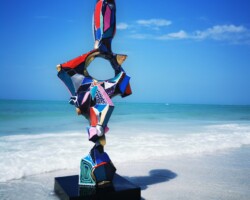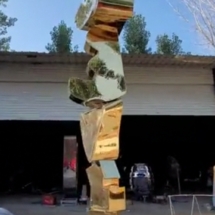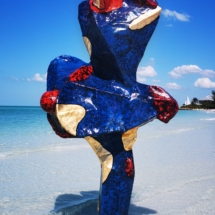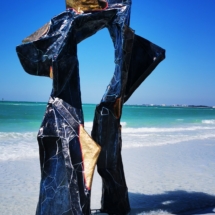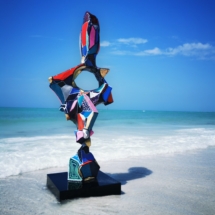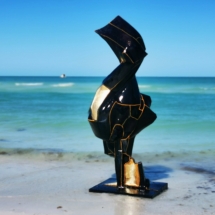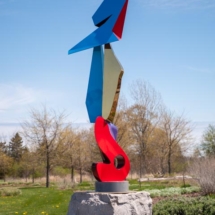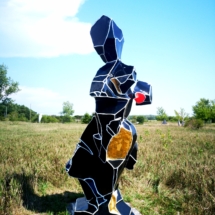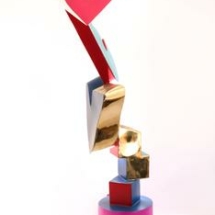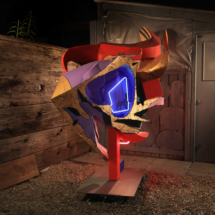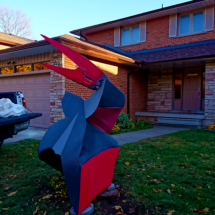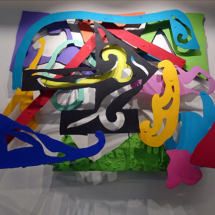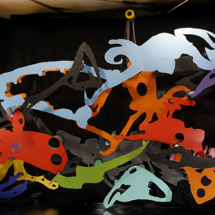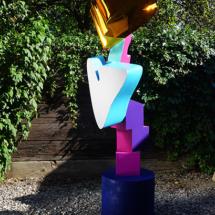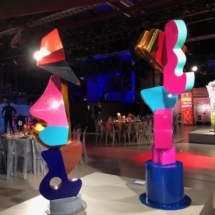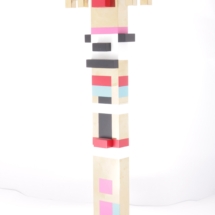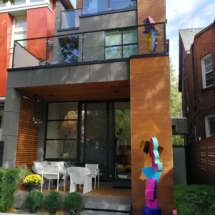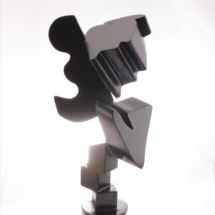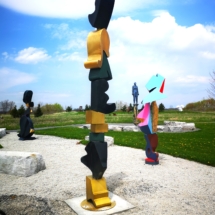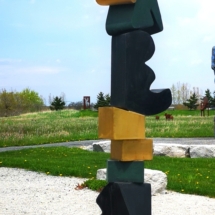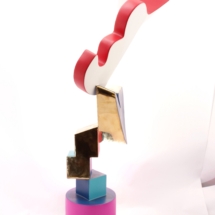Shape in Space
– Viktor Mitic’s enigmatic interactive sculptures
Viktor Mitic’s cut aluminum sculptures have a post-Pop flair. Inspired by the likes of Frank Stella, they animate space by combining car paint colour with shaped metal forms. Shapes and spaces between create a multi-level depth effect, animating space. The references could be to the industry and the machine, but Mitic interprets these forms as contrasting and assembling so they become a pure language where forms, shapes, each unique, inter-act and inter-relate. The result is to build a composite spatial dynamic. Drawing in space, presenting a series of 3-dimensional points of reference, builds scale structurally into an imagined and infinite scape. Mitic’s gestural object sculptures materialize conceptions into a very real sculptural presence.
We can see that Viktor Mitic has moved beyond the purely linear to a more engaged mechanistic poetry. Blue lines curve, yellow lines curve, almost in parallel to one another, but at different depths. The depths are theatrical, close to the spirit of construction, and the huge, exaggerated, rivet-like attachments play on appearance and reality, giving the illusion that these are indeed mechanisms of the imagination.
The positive shapes used in one large-scale piece, and the left over negative cuts recycled into yet another, build a dialogue on presence and absence, on form, on utility and the projected imagination.
Still, Viktor Mitic’s other recent smaller sculptures are inspired by paint drips from the artist’s studio. Elliptical, beatific, these painted and assembled forms have some of the poetic spirit of Arp’s surrealist sculptures. The metal shapes are allegorical and build upwards from painted block/pedestals that have coloured geometrical cues, tiny traces. Using car paint and giving the aluminum shapes a graphic punch, Viktor Mitic is developing his language as he goes along. Neither abstract nor figurative, the language is about pure perception, the way we can build meaning out of colour and shape associations. And so, from the geometries to curvilinear organic, bio-metric forms, these sculptures recall the architect/designer Frederick Kiesler’s biomorphic furniture and architectural experiments with forms in space, including the design of Peggy Guggenheim’s exhibition environment for the Art of this Century (1942) show in New York. To create such works in a virtual age of mediated perception and production is to realize the continuity and process of life itself.
The larger scale mobiles and synthetic collages have a continuity and complexity that mirrors the endless complexity of life itself.
Viktor Mitic’s latest sculptures explore a continuity, and this continuity makes his work integral and physical, emphasizing a structuralist worldview. His sculptures have to do with the way we visualize forms in space, and how sculptures as objects guide us to understand the infinite nature of our relation to environments.
– John K. Grande, Writer/Art Critic




